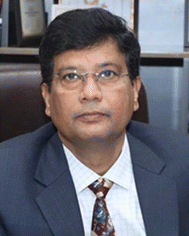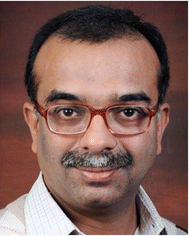Introduction to celebrating the 10th anniversary of INST Mohali
Amitava
Patra
 a and
Umesh
Waghmare
b
a and
Umesh
Waghmare
b
aInstitute of Nano Science and Technology, Knowledge City, Sector-81, Mohali, 140306, India. E-mail: msap@iacs.res.in
bSchool of Advanced Materials and Theoretical Science Unit, Jawaharlal Nehru Centre for Advanced Scientific Research, Bengaluru 560064, India
The Institute of Nano Science and Technology (INST), Mohali (Punjab) is an autonomous institution of the Department of Science and Technology (DST), Government of India. It was established under the umbrella of NANO MISSION and was initiated by DST to emphasize nano research in India. This is the first Indian nano-research institute in the country, which began its activities on 3rd January 2013. The INST campus has now been set up in Knowledge City at Sector-81 Mohali, Punjab, establishing its residential campus and state-of-the-art laboratories equipped with advanced research tools. To solve global and local challenges, INST has emphasized cutting-edge research in nanoscience and nanotechnology with an interdisciplinary nature in the domains of energy, environment, agriculture, health care, quantum materials, etc. Our motto is “Knowledge of nanoscience for the nation”. INST's vision is to emerge as India’s globally competitive foremost research institution in Nano Science and technology and contribute to society through applications of nanoscience and nanotechnology in agriculture, medicine, energy, and the environment.
The Institute of Nano Science and Technology (INST), India, celebrated its 10th anniversary partly by organizing an international conference, Trends in Emerging Nano Science: Energy, Healthcare & Quantum Materials (TENS-2023), from 5th to 8th November 2023. The conference covered emerging research areas in energy, environment, agriculture, health care, nanostructures and quantum materials. While the electrocatalytic hydrogen evolution reaction (HER) is a promising route to clean hydrogen fuel generation, understanding atomistic mechanisms essential for sustainable and efficient hydrogen production has been challenging. Many of these problems and phenomena involve catalysis and the interaction between nano-scale materials, electromagnetic fields, and chemical species, with rich electrochemistry and mechanochemistry. For example, the discrete electronic transitions between the quantized electronic levels of quantum dots culminate in unique physical properties and the relaxation of excited states. Achieving a specific structure is thus necessary to fine-tune catalytic properties at the atomic scale. A major emphasis has been given here to metal nanoparticles, semiconducting quantum dots (QDs), metal clusters, 2D materials, perovskites, upconverted nanocrystals, carbon dots, nano-aggregates, and heterostructures for electrocatalysis, photocatalysis, piezoelectrics, thermoelectrics, Hall transistors, magnetics, enzymatic activities, drug delivery, photothermal therapy, infectious diseases, nano theranostics, cancer nano-therapeutics, single molecular detection and SERS detection.
This celebratory-themed collection, therefore, aims to provide a platform to showcase the recent advances and current challenges in research and applications of nanomaterials from researchers based at INST, Mohali, and speakers of the conference. For example, Pal et al. (https://doi.org/10.1039/D4NR02728K) report multi-stimuli-responsive colloidal microgels for the stimuli-responsive on-demand release of ciprofloxacin, and Kumar Singh, Kumar Verma et al. (https://doi.org/10.1039/D4NR02621G) highlight intranasal chitosan nano-aggregates with anti-TB drugs used to reduce mycobacterial load. HfN nanoparticles using emerging laser ablation for photothermal therapeutic effects was reported by Kabashin et al. (https://doi.org/10.1039/D4NR02311K), and protein nanoparticles have been used for the killing of neuroblastoma cancer cells in work by Karmakar et al. (https://doi.org/10.1039/D4NR00642A). DNA origami-templated gold nanorod (Au NR) dimers are reported for label-free detection of single molecules in work by Sen et al. (https://doi.org/10.1039/D4NR01110D). This collection covers a broad scope of recent advances in nanoscience and nanotechnology research, from theoretical understanding to nanomaterial applications. The collection of articles report topics from hydrogen generation performance using metal nanoclusters (https://doi.org/10.1039/D3NR05445D) to studying the upconversion photoluminescence properties of Ba2V2O7 nanosheets (https://doi.org/10.1039/D3NR06401H), and everything in between. We hope this collection gives insight into some of the excellent research that is being carried out at INST, Mohali as we celebrate 10 years.
| This journal is © The Royal Society of Chemistry 2024 |


